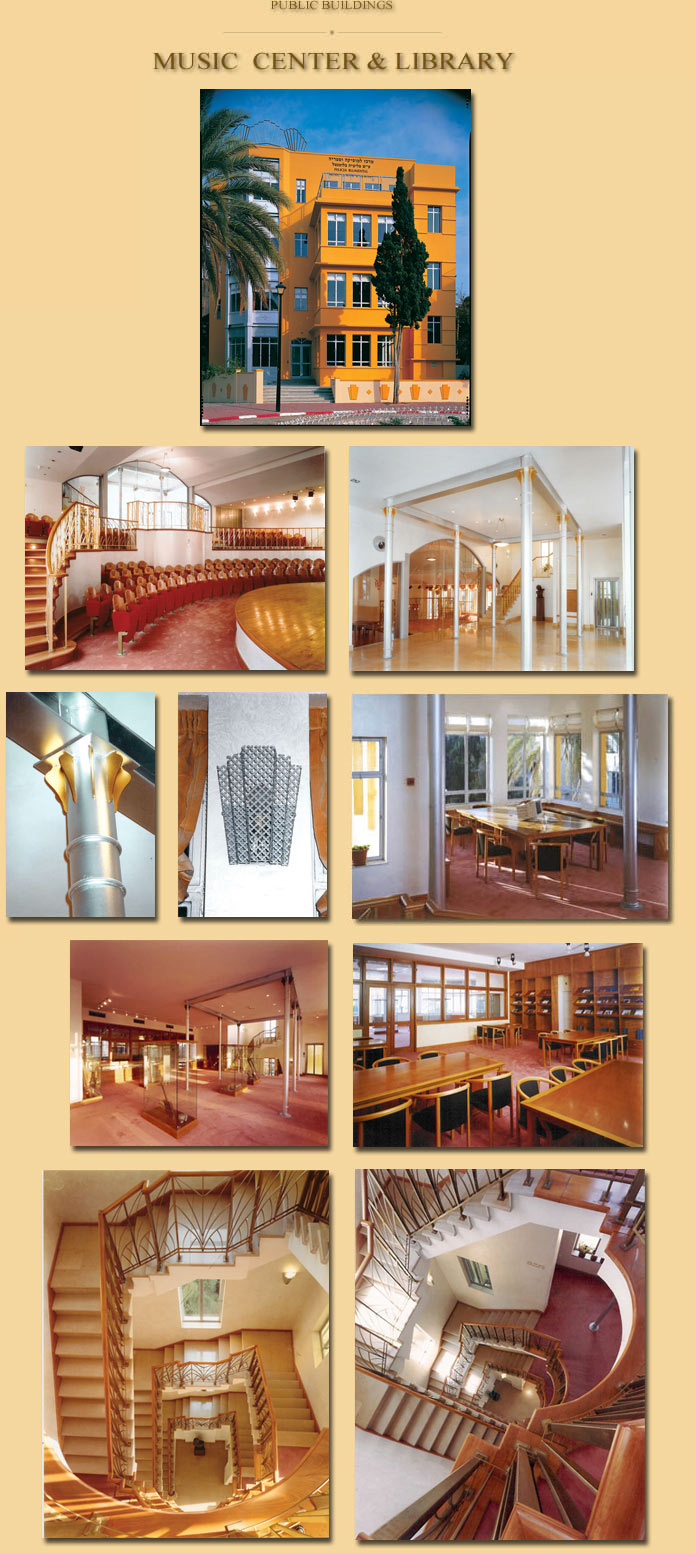|
Location: 26 Bialik Square
Tel-Aviv
Client: Tel-Aviv Foundation
Completion Date :1997
Publications
about
Film:(17.3Mb)
Read the Article published in:
www.architectureweek.com

A Unique Dialogue Between A New Building
and the Historical Environment
Preserving the spirit of a historical environment does
not necessarily mean a fanatic repetition of its language. The Bialik
district at the heart of Tel-Aviv, with Bialik Square at its center, is
a micro-document of the architectural history of Tel-Aviv from the
1920’s, the "Eclectic period
" , when European architecture was brought to Israel and
integrated with the local oriental architecture, to the
1930’s and the new ‘International Style’
somewhat later.
The new Music Center and Library built at Bialik Square
(1997) is located on the site of a three-story residential house built
in 1931 and demolished in 1994.
The key question I asked myself was, what is the right
thing to do in order to preserve and enhance the spirit
of what still exists around there, which is so human and right.
Standing in the square I adopted none of the classical approaches. I
aimed neither to reconstruct the past nor to dissociate myself from it
by enforcing a completely new order. I was looking for a language that at
that point in time in Bialik Square would create a meaningful
dialogue between a new, contemporary building and the
historical environment.
This intimate and organic integration was created by
several basic means:
The dimensions of the building were in harmony with the human scale of
the square.
The orange paint of the building’s façade,
apparently expected to disturb the tranquility of the square, was the
element that complemented the blue color of the sky and the green color
of the trees to create a harmony that inspired peace and serenity in
the square.
The cornices that jut out at the facade belong morphologically both to
the building and to the space next to it, uniting them together.
The crown on top of the building provides a graduated link
to the sky. Its shape was derived from the same language that
determined the pattern of the cement tiles of the porch and the reliefs
on the railing wall.
At the front, where the building touches the square, an entrance
porch was designed for the orchestra to play to the audience
while they are sitting in the square. Thus creating a physical and
human connection between the building and the square.
The dialogue between the building and the square continues through the
high windows behind which all the indoor “ public
“ areas are located, as well as from the roof terrace
overlooking the square.
Past the main lobby, at the entrance to the building,
is the auditorium, separated from it by a glass wall, through which the
back garden at the far end can be seen.
At the side of the lobby there is a wide-open staircase, which is an
identified beautiful space by itself. The high windows alongside the
staircase allow daylight into all the parts of the building.
The first floor houses the lending library.
The second floor accommodates the museum of
musical instruments and contemporary exhibitions related to music, the
periodicals room and an archive. These three spaces make one visual
continuum while preserving the identity and uniqueness of each space.
The top floor houses the audiovisual
library. Extending from this floor, overlooking the square, is a roof
terrace that has also a view of the sea.
The details of the interior, all designed by me, were
not perceived as isolated ‘designed’ fragments, but
as part of one hierarchical language in which the
square, the building and the interior were regarded as one
continuous system.
|
